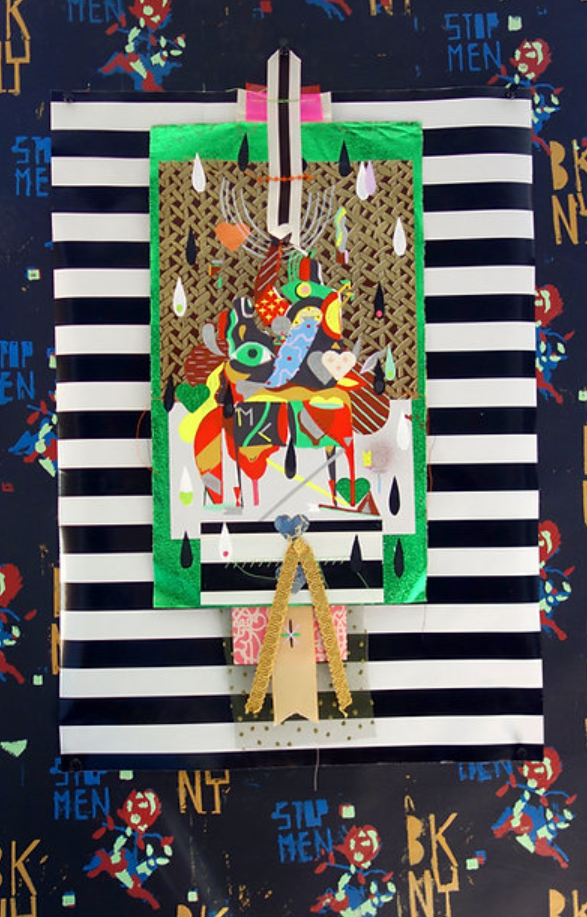
Tribal Druid & Native

MCXT- Monica Canilao x Xara Thustra Let Love In HPM Collage Print by MCXT- Monica Canilao x Xara Thustra
Let Love In HPM Unique Collage Print by MCXT- Monica Canilao x Xara Thustra 8-Color Screen Print on Recycled Upcycled Paper & Fabric Textile Limited Edition Pop Street Art Artwork. 2023 Signed & Numbered Screen Print, Collage, Gouache, Cloth & Thread HPM Embellished Limited Edition of 30 Artwork Size 9.5x25 on Recycled Upcycled Paper, Mixed Media & Fabric Textile. The Essence of Mixed Media in Street Pop Art Monica Canilao and Xara Thustra, known for their vibrant contributions to street art and pop culture visuals, have embraced mixed media's eclecticism to its fullest. The artwork is a culmination of various recycled papers, thread, trim, fabric, pink vinyl, acrylic paint, silk screen ink, gouache, and other mixed media, all coming together to create a textural symphony that is as much about the medium as it is about the message. The "Let Love In HPM Unique Collage Print" by the collaborative artistic duo MCXT, which comprises Monica Canilao and Xara Thustra, is a riveting piece of art that stands at the intersection of pop art, street art, and graffiti artwork. This unique artwork is part of a limited edition series, with only 30 pieces created, each bearing its distinct characteristics due to the handcrafted nature of the prints. Exclusivity and Technique Each print in the series has been treated with an 8-color screen printing process, laying the foundation for the following intricate collage work. After the initial printing, the artists have taken to collaging, sewing, and hand painting on each print, ensuring that every print is unique. This technique not only underscores the exclusivity of each piece but also reflects the street art ethos of creating something unique and personal, a direct contrast to the mass-produced images that often characterize the consumer culture critiqued by pop art. Dimensions and Physicality The tangible aspect of the artwork is notable, with its dimensions stretching to 9.5x25 inches. Using recycled and upcycled materials is not just an artistic choice but also a statement on sustainability and the reusability of often discarded materials. The incorporation of cloth and thread adds a dimension of domesticity and handiwork, which contrasts with graffiti art's traditionally masculine and urban connotations, thus offering a commentary on gender roles within the art world and beyond. Collaborative Synergy The collaboration between Monica Canilao and Xara Thustra melds minds and styles, which is evident in the work. Canilao's background in creating detailed, intricate worlds full of personal symbolism complements Thustra's bold, graphic approach, which often includes textual elements and a clear, strong message. The synthesis of these two approaches results in a piece that is layered not just in its physical makeup but also in its conceptual depth. Cultural and Artistic Significance "Let Love In HPM Unique Collage Print" is a testament to the power of street pop art and graffiti artwork to comment on and interact with the broader cultural discourse. With its handcrafted individuality, the artwork challenges the notion of art as a commodity and reasserts it as a means of personal expression and social commentary. It's a celebration of the DIY ethos and the cultural significance of street art as a form of public dialogue and resistance. This limited edition artwork by MCXT is a powerful piece that captures the essence of street pop art and graffiti through its use of mixed media, its handcrafted nature, and collaborative spirit. The artwork serves as both a visual feast and a sociocultural commentary, bridging the worlds of fine art, street aesthetics, and environmental consciousness.
$384.00


